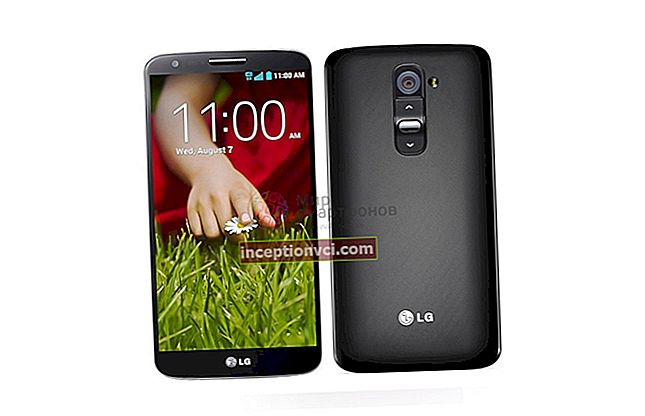The HP iPAQ 200 Series Pocket PC was one of the most anticipated mobile devices. Talk about the extinction of the PDA as a class has been going on for a long time. Lovers of gadgets and simply interested public sadly observed the departure of the leading manufacturers with this once distinguished by unprecedented market activity. Many with sadness looked at the termination of the production of interesting and still in demand devices. Following reports on the next reduction in the PDA segment and an increase in the total share of communicators, remaining in the stores of the device were acquired with thoughts of a speedy discontinuation and discontinuation of technical It is clear that HP's announcements about the planned release of the long-awaited heir to the famous iPAQ 4700 were greeted with enthusiasm and numerous assumptions about what the heir will look like. In sale, pocket computers of the 200 series began to appear in 2008.

Package contents and characteristics

The pocket computer comes in a medium-sized box (before HP did not spare cardboard for boxes) with a pleasant design and inscriptions in Russian. Inside are a computer, battery, pen, charger, sync cable, case, documentation and software discs. The set contains only the essentials, no frills. But before, HP computers were supplied with a cradle and a plastic protective cover for the screen.


Pocket PC Features:
- Processor Marvell PXA 310 with a frequency of 624 MHz;
- volume of operative memory 128 MB, flash memory 256 (available 164) MB;
- TFT display with a resolution of 480x640 pixels, 4 inches, 16-bit color;
- operating system Microsoft Windows Mobile 6 Classic (collection 18165.0.5.0), internal version Up to 1.00.12 from 23.01.2008;
- Module of wireless communication Wi-Fi IEEE 802.11b / g with support for WPA2-Enterprise encryption;
- Module for wireless communication Bluetooth version 2.0 with EDR support;
- SDHC memory card slots with support for SDIO and Compact Flash HC;
- accumulator with a capacity of 2200 mAh;
- Dimensions 134 x 75.4 x 17.5 mm;
- Weight 190 grams.

Design
Photos HP 214 are not able to convey the true dimensions of the handheld computer. Yes, and words of imprint from communication with the device are difficult to express. After HTC Advantage, the hero of the review takes the second place among the largest and heaviest Windows Mobile devices. However, the subjective feeling of the iPAQ 214 is very much inspired by long-term communication with compact communicators. In comparison with them, the hero of the review looks like a dinosaur with a huge display. But among the classic PDAs, the iPAQ 214 is by no means an exceptional model. Yes, it is bigger and heavier than many PDAs, including its predecessor, the iPAQ 4700. But the limit of rationality (unlike the HTC Advantage) iPAQ 214 does not overstep.
The iPAQ 214 looks impressive and solid. The design of the PDA brings comparison with a strict and expensive business suit. The front panel is wrapped in glossy black plastic (unfortunately, it perfectly retains fingerprints) with silver elements. The rear part of the body is made with the use of the currently fashionable soft touch coating, imitating rubber. The ends are a monolithic stiffener made of strict gray plastic. The build quality of the iPAQ 214 is at the same level, with the exception of some wobble of the hardware keys and a little play of the plastic next to the peripheral ports. Of course, the pocket for the iPAQ 214 pocket computer still needs to be searched. Despite the use of lightweight plastics, the device turned out to be weighty and bulky. The most place for him is in a bag, backpack or briefcase. but for car lovers, the dimensions are only beneficial: the large touch screen and external GPS module will create an excellent bundle for satellite navigation.
Most of the controls of the pocket computer are located on its front panel. Joystick with a central button, 4 hard-coded programmable keys, a button to turn on the device, a light sensor and two computer status indicators. The display dominates all of this, but, contrary to the fashion, it is located in a recess on the front panel.

In the back is the main speaker and the battery compartment, closed with a lid. On the sides are located a pen connector, dictaphone buttons and device reloading, as well as a hole for attaching a lace - the optimism of the designers just works. The style is medium-sized, wide, monolithic and moderately weighty.Despite the external data, the PDA lies comfortably in the palm and does not pull out the hand. It is convenient to use the interface like a stylus or fingers.



The upper end of the computer is occupied by memory card slots. The bottom one is used to accommodate a 3.5 mm output for headphones, a microphone, a miniUSB compatible connector and a proprietary 24-pin connector. The non-standard connector is used both for connecting to the docking station and proprietary accessories, as well as for the under-documented USB hosting. The network contains detailed instructions on how to make a USB connector that allows you to connect a mouse, keyboard and external storage devices.


For many, the iPAQ 214's appearance will scare off. But only not fans of classic universal pocket computers. The iPAQ 214 looks like a true heir of traditions and brings the PDA four years ago to the heyday. There are also a couple of complaints about the ergonomics of the iPAQ 214. With a long work with a computer, it does not have a wheel or a scroll slider, there is enough space for it. Also puzzling is the location of the headphone jack. The wires stretching from below do not only look unaesthetic, but also do not allow you to put the device back in the case.
Software
The iPAQ 214 does not have a lot of extra software. The Today screen of the pocket computer practically does not differ from the standard one. As a bonus, there are signs of wireless connections and several indicators-icons of the PDA status. The program RhinoCode TodayPanel Lite 3.8 is responsible for their appearance and customization.

The ClearVue PDF program has been installed to view the popular PDF electronic document format. HP PrintSmart Mobile provides the ability to connect to the printer over a network or using Bluetooth. Only Hewlett-Packard printer models are available for selection by default.


Known by previous models of HP handheld computers, the BT Phone Manager program configures interaction with cell phones via the Bluetooth interface. The analogous setup of the network connection can be performed independently and much faster, using the standard means of the operating system and the Broadcom stack.
HP iPAQ QuickStart Tour and HP iPAQ Tips are designed to somewhat facilitate the familiarity with a pocket computer.
Among the settings menu, you can install the HP CertEnroller utility, with which you can obtain various certificates in corporate networks. It is worth mentioning that starting with the 6 version of Windows Mobile supports root, intermediate and personal certificates.
The traditional program HP Asset Viewer provides the user with various information about the hardware and software parts of the pocket computer.




The whole set lacks the traditional task manager from HP, which was preinstalled on all previous models of the company's handheld computers and was called up with a separate key.
Sound system and display
TFT Matrix used in the iPAQ 214 in many standard. VGA resolution (480x640 pixels) and 16-bit colors are no surprise today. But what really impresses is its physical dimensions - full-weight 4 inches. The dimensions and resolution are such that the smallest details on the screen are visible at a considerable distance, and the computer can be successfully operated with fingers. Individual pixels are invisible. Visually impaired users will appreciate the standard mode. a when switching to true VGA mode, the amount of information on the display will grow in 4 times. With this, the perception suffers insignificantly.
The brightness of the backlight is smoothly adjustable in a wide range, right up to full shutdown. Viewing angles and brightness are more than sufficient for comfortable work in different conditions. One of the features of the hero of the review is the presence of an illumination sensor on the front panel. When it is activated in the settings, the backlight brightness automatically decreases at a low level of external lighting and increases in bright light. Work with a computer is hindered by bright LEDs next to the sensor, especially in conditions of complete darkness. However, if necessary, you can simply cover them with your finger.

The power of the speaker of this model is small. The sound is significantly muffled if the PDA is on the table. For the sound quality, it is difficult to say something, but with information about system events or auto-navigation, the speaker is correct. The headphone jack is located on the bottom of the computer, which causes minor inconvenience. On the positive side - the standard 3.5 mm jack. But the quality of the signal transmitted to the headphones has become a fly in the ointment. We failed to achieve acceptable results in the RightMark Audio Analyzer test.

Wireless technology
The pocket computer is equipped with Bluetooth 2.0 modules with EDR technology support. Manages the operation of the module, which is used in all HP handheld computers by the Broadcom production stack. The plus of such a solution is a convenient and understandable interface for setting up the interface. Podderzhivayutsya modes raboty modulya Bluetooth: vzaimodeystvie with besprovodnoy stereogarnituroy, dostup to the Internet via sotovy telefon, sinhronizatsiya and swap kontaktami, sinhronizatsiya through ActiveSync, swap faylami, podklyuchenie to lokalnoy network obedinenie neskolkih Bluetooth ustroystv in chastnuyu network, swap business kartochkami, udalennoe computer control, keyboard connection, serial port emulation and voice gateway. The list is very extensive and includes almost all the possibilities that Bluetooth technology can provide.


The second wireless module is responsible for working in a Wi-Fi network in accordance with 802.11b / g standards. One of the features of the implementation of this interface in the iPAQ 214 is the implementation of WPA2 authentication. Together with support for various types of certificates, it opens up the possibility of using PDAs in most private and corporate wireless networks. In support of this fact, the iPAQ 214 was configured to work in a Wi-Fi network using one root and one private certificate and WPA2 mode. In the process of working with wireless interfaces, no problems were noted. The lack of an infrared port once again confirms the fact that this interface is outdated.
As noted earlier, centralized control of wireless interfaces is carried out from the HP iPAQ Wireless program, designed to replace the standard Windows Mobile applet. It is worth mentioning once more about the presence of two memory card slots with the possibility of connecting external equipment. In this way, the functionality of the computer can be easily expanded by adding, for example, a GPS receiver, which is clearly not enough in a standard set.


Battery
In addition to size and weight, the iPAQ 214 surpasses its predecessor hx4700 in one more parameter - the capacity of the regular battery. The capacity of the lithium-ion battery, increased from 1800 mah to 2200 mah. The installation of a more modern processor and a high-capacity accumulator should provide the hero of the review with an advantage in autonomous work over its predecessor.
The measurements of the time of the autonomous work were carried out in several modes. In the first of them, the pocket computer acted as a portable electronic book. Reading in the HaaliReader program at 80% backlight brightness discharged the battery in 10 hours 20 minutes. The result is slightly below the average of the majority of handheld computers and communicators, and the blame for this is the size of the display, or rather, the need to illuminate a larger area. The second mode implied using the PDA as a music player. GSPlayer played files with the display off for 15 hours 30 minutes. The half-time difference between the operating time of the iPAQ 214 in reading mode and playing music is also indicative of the high energy consumption of the backlight. Optimally adjusted display brightness will help significantly save battery power and extend the computer's autonomy time. Under full load, including the maximum brightness of the backlight, activated wireless communication modules and a movie that was started over Wi-Fi, the battery was charged in 40 minutes.
There are three ways to charge the battery in the iPAQ 214. The most simple and quick assumes the use of a charging device. The process is completed in 2.5 hours. Setting the "fast" charging mode from the USB port of the desktop computer takes 6 hours. In slow mode, even for a whole working day, the battery is not able to charge “to the full”.


The capacious standard battery undoubtedly benefited the hero of the review, but it did not significantly affect the battery life. The energy-saving technologies of the central processor did not help either, since the backlight of the screen makes the main contribution to consumption. If you need a long work away from power sources, you should purchase a high-capacity battery with an impressive 3800 mAh.
Performance and speed
The beginning of a pocket computer is a matter of respect. The central processor Marvell PXA 310 operates at a frequency of 624 MHz. More powerful mobile processors in PDAs are extremely rare. Only a model with an index of 320 and a frequency of 800 MHz comes into memory. The PXA 3xx family represents a further development of the Intel PXA 27x series ARM processors, which have won wide recognition from users of handheld computers.Although the PXA 27x chips were only 4 years old, Intel managed to subdivide the mobile technologies of the company Marvell Semiconductor Inc (not to be confused with the publisher of comics!) The Marvell PXA 310 (Monahans-LV) was presented to the public at the end of 2006, since mid-2007 it has become available for mobile equipment developers. Key features of the chip: 90 nm production technology, Intel Wireless MMX 2 instruction set, Marvell Scalable Power Management, integrated hardware acceleration of video and audio playback in less than 30 seconds In addition, at the hardware level, the PXA 310 supports various encryption and security technologies, accelerated data transmission from cameras with a resolution of up to 5 megapixels In addition, the iPAQ 214 developers did not skimp and installed 128 MB of RAM. Energy-independent memory in the PDA at the present time is not much, only 256 MB. Then the computer has two slots for external memory cards, and not exotic, but the most common types: full-size SDHC cards with support for SDIO and the now rare Compact Flash format.
The power connection is one-of-a-kind: the HP iPAQ 214 is the fastest handheld computer available to buyers.
Conclusion
Obviously, the HP iPAQ 214 is a worthy successor to the larger and more powerful pocket computers of previous generations. It has almost everything that a modern user needs. What is missing is a little: a spinning wheel and, pity, a GPS module. The rest of the parameters of the hero of the review are quite remarkable and make it possible to put him in the leading position among the classic Windows Mobile devices. The relatively low cost of the iPAQ 214 and the almost complete absence of direct competitors strengthen the computer's position on the market. A rare case in the practice of testing pocket computers, when it is easy to make an unambiguous conclusion: if you need a powerful pocket computer with a large screen and obscene dimensions, then the HP iPAQ 214 is the only option.
The average price for the HP iPaq 214 is $ 415.









